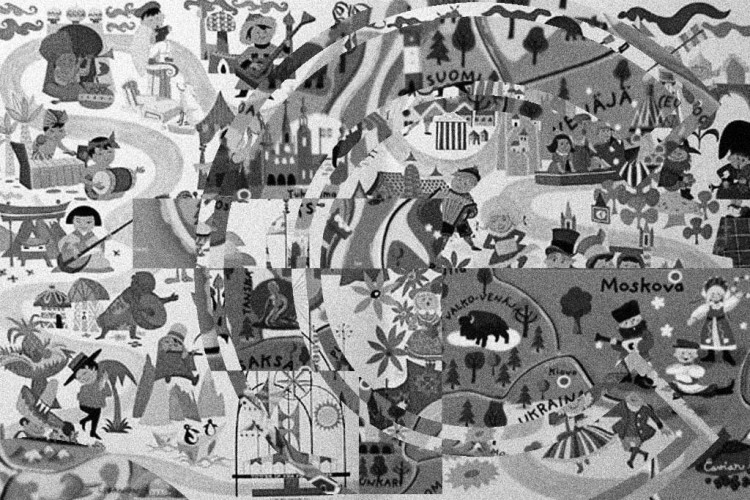
The urge to document our travels often comes naturally. Some are more frivolous than others when it comes to hoarding bits and pieces of information – be it photos, videos or notes – but eventually, we all end up doing it. In my previous essay, I talked about the relationship between photography and travelling. This month, I will focus on the retelling of one’s adventures through words. In many cases written pieces related to travelling are lumped into the generic and ambiguous category of “travel writing” – a genre that I think limits the ways in which a trip could be retold. “Travel writing” is often associated with travel magazines. In short, it is commonly known as a thing between the media and its audience.
Drop the quotation marks and we have travel writing, which is an expansive topic that comes in many different forms and purposes. Like photography, writing is not always about pure documentation. Some pictures are taken for aesthetic reasons in the same way that some essays are written for an exercise in prose, in capturing the nuance of a particular place. It is as if the place in question is a mere reference point that indulges the writer’s imagination and subjectivity.
Subjectivity is both a gift and a curse. Without it, there would be no opinions, but too much of it would only result in manipulation. Articles and essays (or rather, the writers of articles and essays) often fall victim to it. When we write, we are not only deconstructing the details we have accumulated during our journey, but we are also reconstructing them – and the thing with reconstructing anything is that accuracy is not guaranteed. Taking notes can help, but in the end, our memory is unrelaible. We have no choice but to let our own words reshape our memories.
“Well, do our essays have to be accurate?” Like all difficult questions, the easiest answer is “It depends.” Is the piece of writing supposed to be informative? Is it a personal document, something to read when we’re older? Or is it something that you don’t want to remember in great detail? Would a poem, for example, be enough to preserve our impressions of a place?
Experience is not quantifiable, and it cannot always be verified by facts. We begin with an angle when we arrive, and we begin again – most likely with a new angle – when we sit down to write about what we have experienced during our vacation. A journalist has a responsibility to keep facts in check, but the casual traveller who would rather write than take pictures has options. In a 1932 interview, the famous American painter Edward Hopper said, “You can’t project your mind onto the canvas, because there are concrete things that interfere, technical things. It’s decaying from your original idea.” When writing, the opposite is true: The concrete and technical things “decay” while our own ideas, observations and perhaps even prejudice bloom. We are interrupted by our own thoughts and feelings toward a particular setting, rendering us incapable of painting what we see.
To see things exactly as they are is more challenging than it seems, so when I tried to think of a theory in order to understand the nature of four types of writing with regard to travelling, I struggled. To explain the various degrees of adherence to facts, I came up with a simple spectrum that highlights four points in mind: 1.) Articles (very adherent to facts), 2.) Essays, 3.) Poetry and 4.) Fiction (least adherent to facts). While the first two are dependent on data, the last two are dependent on nothing more than the reference points that I mentioned earlier in the essay: the literal versus the figurative.
Examples of articles are commonly found in travel magazines – flight and accommodation rates, names of places and general observations are typically included. Personal essays tend to be more infused with the opinions and feelings of the writer. They are a concoction of facts and self-introspection. In the short essay, “The Shock of Teapots,” Cynthia Ozick described a beautiful morning in Stockholm, and how “a mysteriously translucent shadow began to paint itself across the top of the city.” A few paragraphs later, she suddenly looked inward, noting that travelling brings back childhood memories, which she calls “permanent ghosts,” and that travellers “regain this ghost seizing brightness, eeriness, firstness.” There is an added perspective. When reading such essays, we don’t only see a place, but we also see the writer’s presence in and relation to that place. In articles, however, the place is the center of attention.
But how about the figurative end of the spectrum? Is it even possible for us to document something using figurative language? Perhaps it is not entirely impossible, for impressions and the reconstruction of atmospheres are what matter. What we see here is the writer (or the character used by the writer), while the place itself becomes a blur, the only clear thing being its name. Sapardi Djoko Damono’s poem “New York, 1971” is a good example of this “blur” and here is a verse, followed by my English translation:
Hapalkan namamu. Tikungan demi tikungan,
warna demi warna tanda-tanda jalanan yang menunjuk
ke arah kita, yang kemudian menjanjikan
arah yang kabur
ke tempat-tempat yang dulu pernah ada
dalam mimpi kanak-kanak kita
(Memorize your name. Corner after corner,
colour after colour of street signs that
point to our direction, which then promise
a vague direction
to the place that was once in
our childhood dreams)
Corners and street signs conjure a rough sketch of a city, but who is to say that it is indeed New York? Other than the title, nothing else in the poem indicates that the poet was referring to The Big Apple. But despite the lack of proof, there is a strong emotional element. There is a clear connection between the character and the place, wherever it may be. In this case, the poet is the only one who needs to know.
While poetry and fiction based on foreign places are not always based on the writer’s own travel journal – as in, research is done from home – the vibe of a city or a country is important because it is what gives readers something to relate to. Poems and stories that revolve around the subject of travelling are more than descriptions – they are expected to trigger certain feelings in both the writer and the reader.
The words we bring home depend on what part of journey we want to keep, and to a certain extent, for whom.











